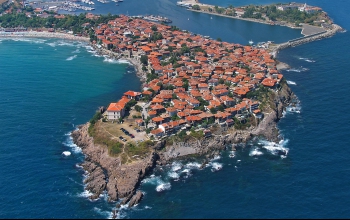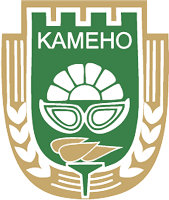Apollonia - Sozopolis - Sozopol
The famous Apollonia was founded ca. 611 BC by settlers of the Greek city of Miletus, in the present-day Republic of Turkey. This is the city with the largest territory along the entire western Black Sea coast - it stretched from Anhialo to Igneada, in the present-day Republic of Turkey.The settlers chose a first-class place for the creation of a new settlement. The Sozopol peninsula was easily fortified thanks to its topography. The city had at least two ports, which were some of the best on the entire Black Sea coast. Finally, in the immediate vicinity rise the hills of Copper Hill, which were extremely rich in copper ore.
As a result of these natural resources, Apollonia became wealthy and prosperous as early as the 6th century BC. The city began to mint the prototype of later coins - these were the so-called bronze arrows-money. They represent the tip of a bronze arrow with a blunt tip, on which the letter A was often placed. Later, the city minted its own gold, silver and bronze coins. They depicted a two-horned anchor with a crab, the Gorgon Medusa and the god Apollo.
Apollonia was one of the richest Greek cities in the V-III century BC. An expression of this wealth was the thirteen-meter statue of the god Apollo, which adorned the temple of this god on the island of St. Kirik, in today's Sozopol port. Several other sanctuaries were discovered on the territory of Sozopol - of Demeter and Persephone, and of Aphrodite of Syria.
In 72, the city was stormed by the Romans, and its fortress walls were destroyed. The city was in decline, but continued to mint its own coins. Later, at the beginning of the 5th century, it was again fortified with strong fortress walls. There was a strengthening in the next century and in the Middle Ages.
After 1201 Sozopol was already a Bulgarian town. In 1263 Byzantium conquered it, and until 1453 it repeatedly crossed the borders of both Bulgaria and Byzantium. In the 13th and 14th centuries, the city was a major exporter of honey, wheat, hides and wax to Venice and Genoa.
1.5 km. north of Sozopol is the largest Bulgarian Black Sea island - St. Ivan Island. A large early Christian monastery was opened on its territory, which functioned until 1629. Three churches, a tomb, a masonry reservoir and monastery cells were discovered. A coffin for relics was found in one of the churches, which, according to the inscription on the box, belonged to St. John the Baptist himself.
The preserved walls of the medieval temple rise to a height of 6-7 m. On the territory of the island were found a fortress wall from the IV-III century BC, as well as a settlement from that time.
In Sozopol itself, a bishopric, 4 churches and the entire fortress wall surrounding the Sozopol peninsula have been studied. Dwellings and streets from the ancient, late antique and medieval periods of the city have also been discovered. One of the greatest discoveries is the ancient necropolis of the city. In it the ancient Apollonians were buried in family plots, in tombs and masonry stone tombs.
Information
Website https://www.sozopol.bg/
Address Sozopol 8130, Bulgaria
GPS coordinates 42.416894, 27.695294



